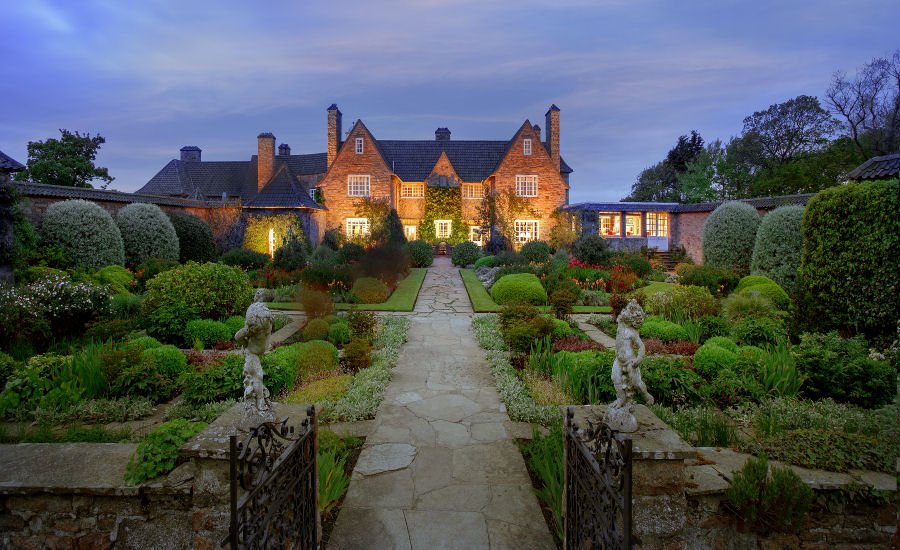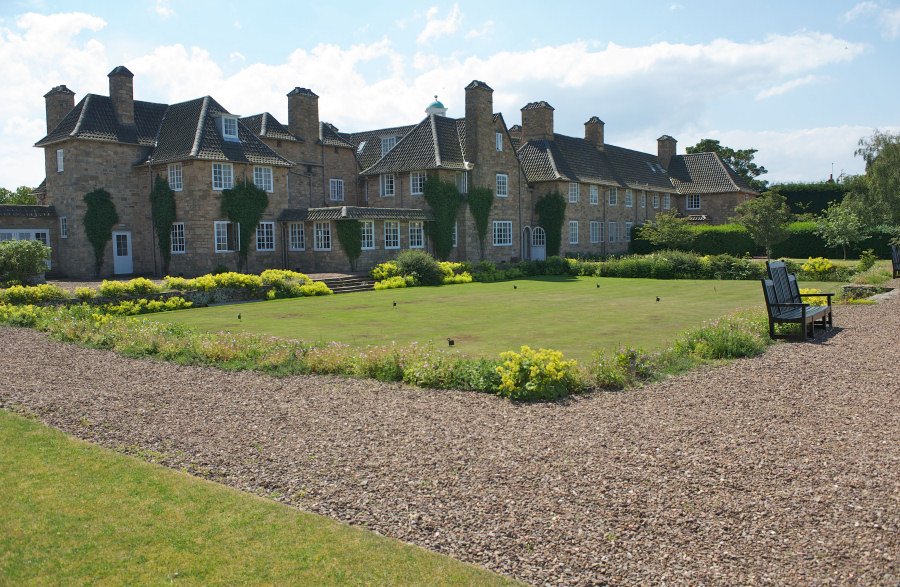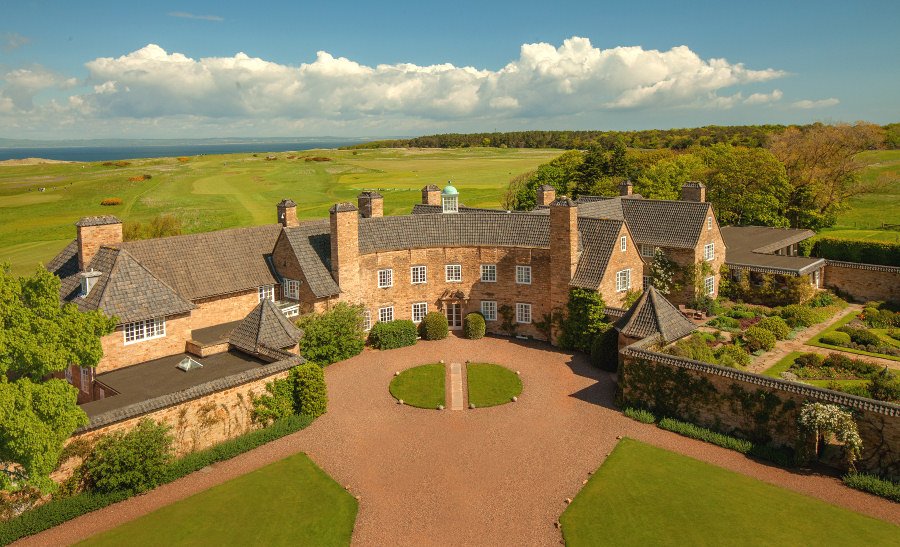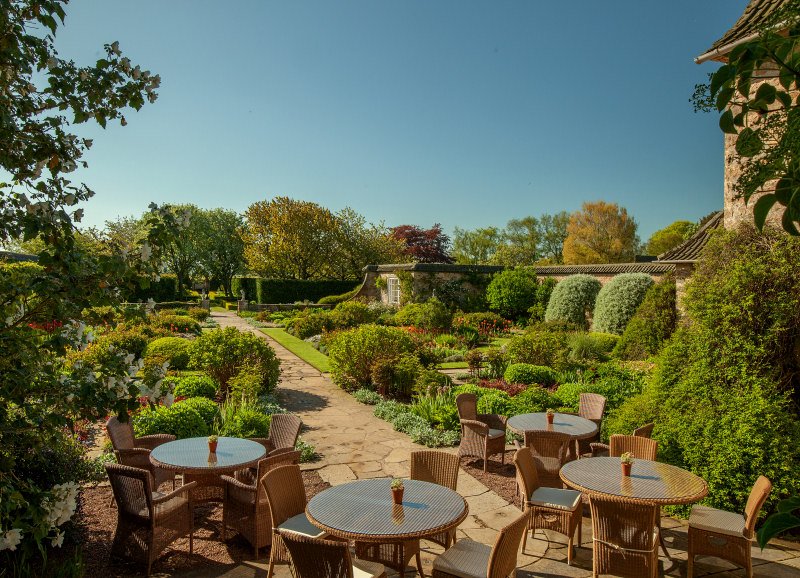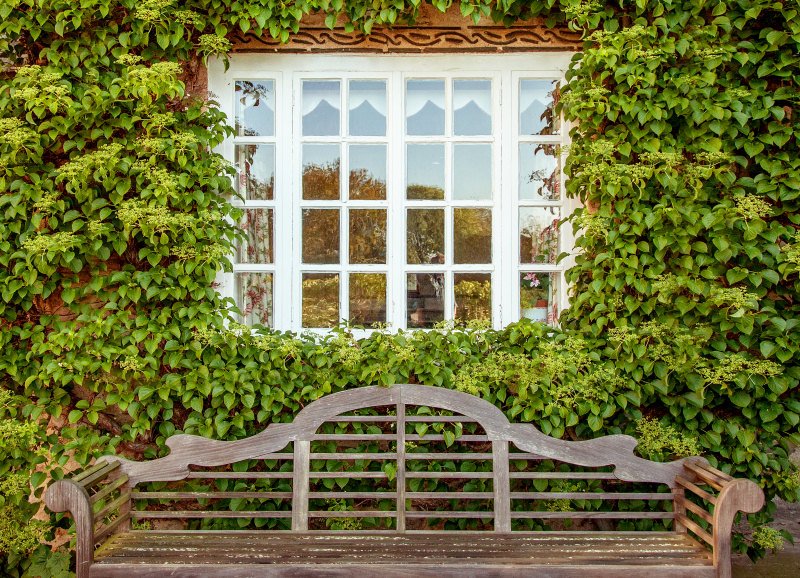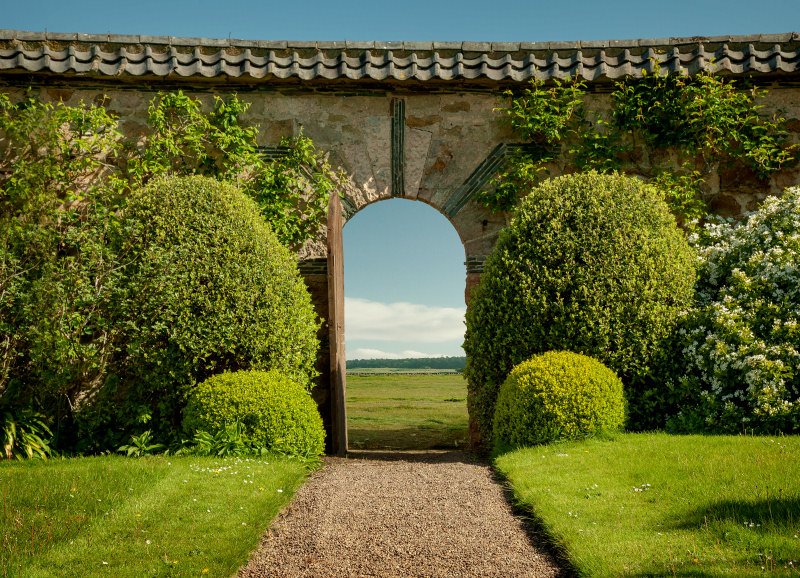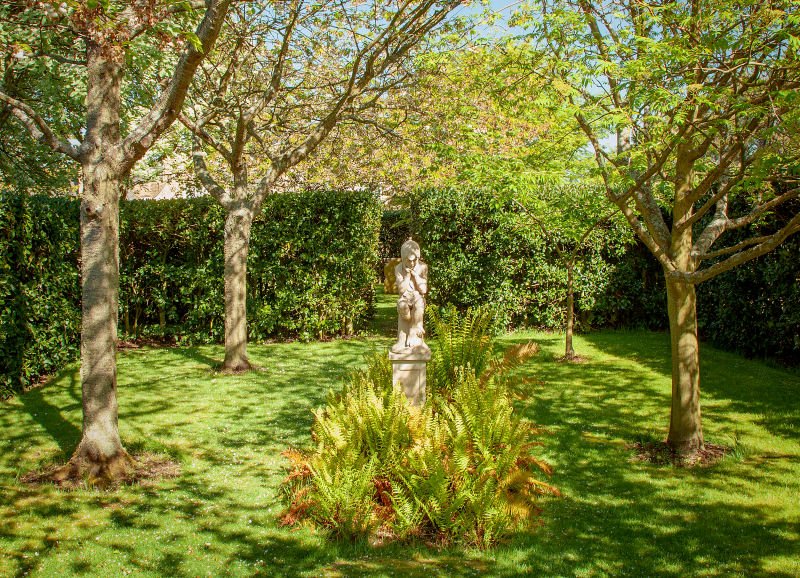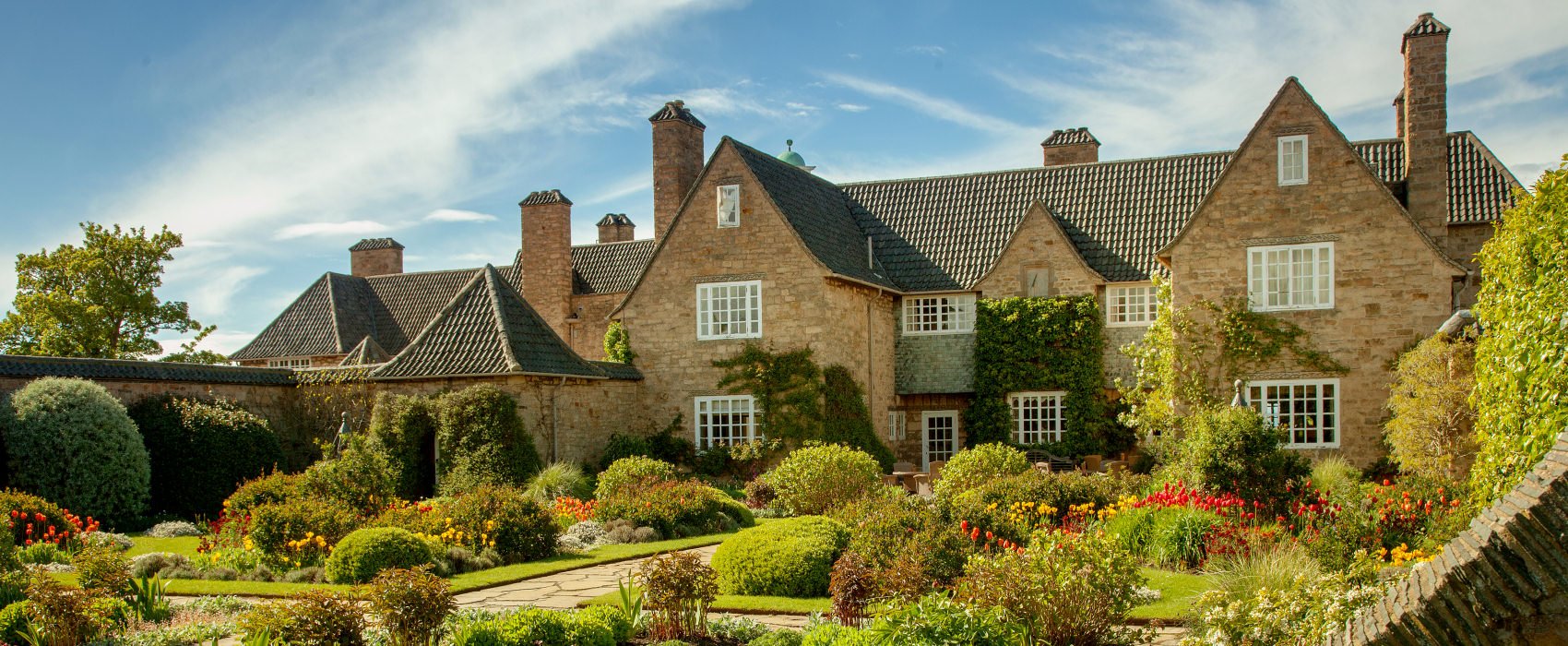
Home > About
About Greywalls Hotel
Greywalls Hotel, with its six‑acre formal walled garden, was designed in 1901 by Sir Edwin Lutyens and is open year‑round.
Originally built as a holiday home for the Honourable Alfred Lyttelton, a keen golfer, the house was famously constructed “within a mashie‑niblick shot of the eighteenth green at Muirfield.”
Built from warm honey‑coloured stone sourced from the local Rattlebags Quarry, with Danish pantiles and graceful crescent‑shaped symmetry, Greywalls quickly became one of Lutyens’ favourites.
In 1905, the property was purchased by Mr. William James, who expanded it to accommodate his family. He commissioned the gate lodges in 1908 to house staff and, in 1911, engaged Sir Robert Lorimer, one of Scotland’s leading architects, to add the Nursery Wing on the west side.
Sir Edwin Lutyens
Greywalls was designed by Sir Edwin Lutyens and built in 1901. The house was described by Sir Laurence Weaver in his book Houses and Gardens by Sir Edwin Lutyens as “a small, albeit dignified, holiday home.”
Lutyens was knighted in 1918 for his contributions to architecture, received the Gold Medal of the Royal Institute of British Architects in 1921, and became President of the Royal Academy in 1938. He passed away in London in 1944.
Lutyens and his celebrated collaborator, garden designer Gertrude Jekyll, formed what was often described as the “dream team” of house and garden design in the early 20th century. Their partnership—combining Lutyens’ distinctive architecture with Jekyll’s masterful planting schemes—produced some of the most admired properties across Britain, Europe, and North America. Both were deeply influenced by the Arts & Crafts movement, ultimately becoming two of its leading exponents.
Gertrude Jekyll’s finest work was often created in partnership with Lutyens. Her own garden in Surrey was designed by him and planted by her, and together they completed numerous commissions across England. While no formal records link Jekyll directly to Greywalls’ gardens, it has often been suggested that the property reflects their combined vision—and may be their only collaborative work in Scotland.
The Gardens at Greywalls
If the enduring image of an Edwardian garden is one of leisurely promenades, secluded seating areas for quiet conversations, and tea with cucumber sandwiches and lemonade served on the lawn on a warm summer afternoon, then Greywalls is its quintessential example. Here, visitors find none of the harsh edges often seen in Scottish gardens. Instead, the gentle countryside drifts into the distance, mirrored by the soft curve of the sky. The distant hum of a lawn mower and the cooing of wood pigeons evoke a timeless, pastoral charm.
One of the garden’s great features is, of course, its walls—though why the house’s original name, High Walls, was changed to Greywalls remains a mystery. The walls themselves are not grey but a mellow blend of yellow, cinnamon, and pink brick, topped with pantiled copes of grey slate.
The arched doorways in the walls feature delicate detailing with grey slate in an Art Deco pattern. Straight and curved walls are artfully arranged to create garden “rooms” and vistas, with radiating paths linking entrances and exits, inviting you to wander. It is a place that stirs the imagination—you can almost hear the swish of oyster‑coloured satin skirts and catch the scent of rose and lavender water.
Everywhere, the formality of straight lines is softened by gentle curves, and the proportions feel perfectly balanced—neither too large nor too small, but just right. Chairs and benches are tucked into sunny and shaded corners alike, offering spaces for solitary reflection or companionable conversation.


